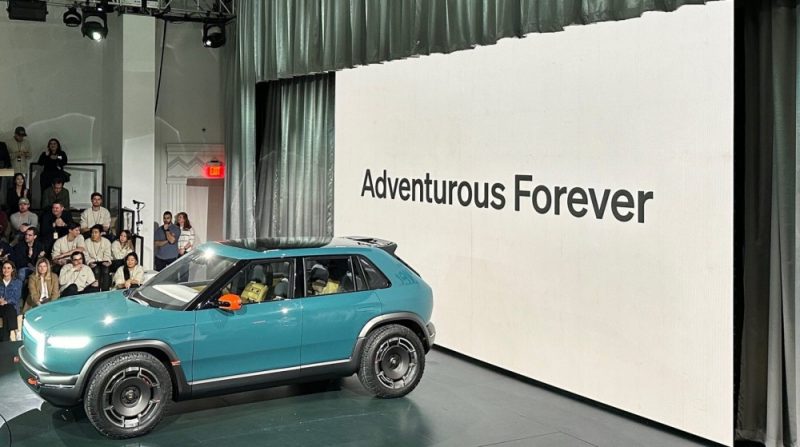Rivian’s updated R2 electric SUV gets a retro-inspired crossover sibling

Rivian is having a big moment. Last week, the company launched its new R2 SUV with a starting price of around $45,000 and about 300 miles of range with the larger battery pack. That’s roughly 40 percent cheaper than the brand’s larger three-row R1S, which debuted for model year 2022.
In a surprise move, Rivian unveiled its even-smaller R3 compact hatchback SUV and performance-oriented R3X. Chief design officer Jeff Hammoud told The Drive that the R3’s sloped backside was inspired by Group B rally cars, and its shape is a noticeable departure from the chopped rear of the R1S. Here’s the backstory of what Rivian is up to.
The new R2… and surprise! An R3

The newest vehicles in the Rivian lineup share a fresh midsize EV platform, which the automaker says reduces the number of parts through consolidation and intelligent design. Both the R2 and R3 will be available with three motor configuration options: single-motor, rear-wheel drive; dual-motor, all-wheel drive; and a three-motor setup with two motors in the rear and one in front.
Less than 24 hours after the launch, more than 68,000 reservations poured in for the R2. It doesn’t hurt that Rivian unveiled a slew of custom accessories for the new EV line, including rooftop tents and other outdoorsy options. The announcement that Rivian models will be able to be charged up at Tesla Superchargers helps as well. Following Ford’s lead, Rivian models can connect to Superchargers with an available adapter that’s about the size of a 1.5-pound bag of coffee beans. And finally, the price tag of less than $45,000 will put the R2 in a competitive bracket with other EVs and will be more affordable for families.
While it might have seemed like a head-scratcher to some that Rivian upstaged its own R2 reveal to pull the curtain off the R3 and R3X, it’s a move that brings major buzz to a scrappy EV brand looking for a win. With investing analysts giving Rivian middling marks recently as EV demand appears to wane, the EV builder is looking for all the interest it can generate.

During the reveal, Rivian also announced some key changes to its production plans. Its $5 billion Georgia plant is on pause as the automaker shifts manufacturing back to its Normal, Illinois facility. Rivian purchased the former Mitsubishi plant in 2017 and has been building its vehicles there while it runs most of its corporate operations in California. It also develops software in the Stanford Research Park in Palo Alto and builds motors in Los Angeles, and has other facilities in Plymouth, Michigan; Wittman, Arizona; Woking in the UK; Vancouver in Canada; and Belgrade, Serbia.
All-electric delivery vans shore up Rivian’s revenue
Electric vans are also part of Rivian’s overall plan for success. E-commerce giant Amazon invested $700 million in the brand and ordered 100,000 electric vans developed by Rivian, and while that’s an exclusive relationship currently, expect Rivian to branch out and broaden its portfolio.
“While investors may have been focused on the over 68,000 R2 reservations in less than 24 hours after the unveiling, one of the company’s most critical stories will revolve around its electric van,” reported The Motley Fool. “That’s simply because not only is Rivian still set to deliver 100,000 vans to Amazon by 2030, the ending of their exclusive partnership opens the door for similar customers.”
Rivian has produced solid vehicles over the last few years, providing an EV with better build quality than rival Tesla. During the grueling eight-day off-road Rebelle Rally competition, a pair of Rivian engineers took home the win in the middle of the desert in a Rivian R1T. Powered by a solar- and hydrogen-powered mobile truck, the R1T didn’t have any range challenges and proved its mettle.
Now we’ll see if the brand can scrabble its way toward profitability with two new models and more on the way.










